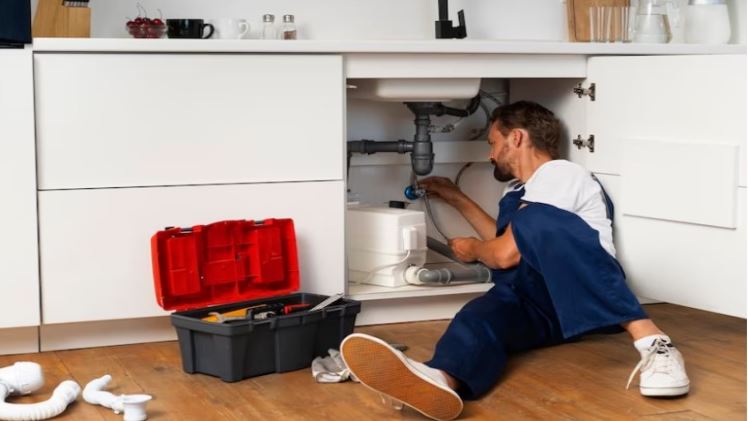What Are the Requirements for a Commercial Kitchen Plumbing?

Sanitary commercial plumbing systems are essential for all types of organizations. Commercial kitchen plumbing networks have significantly stricter requirements than residential settings because of the potential for foodborne illness.
There are certain general criteria for commercial kitchen plumbing for food service enterprises, even though local health standards differ. Knowledge about plumbing standards can help you create a system that will keep your restaurant running efficiently and safely.
What Is A Commercial Kitchen?
A prep kitchen completely furnished and rented out for shared use is called a commercial kitchen. They go by several other names, including food hubs, culinary, communal, community, and kitchen incubators.
It can be intimidating to locate all the necessary information to launch one with so many names. For your convenience, we have gathered all the information in one location.
COMMERCIAL KITCHEN PLUMBING THINGS TO NOTE
Hot and Water Supply
Kitchen appliances require a water supply, with flow, temperature, and pressure requirements affecting piping design. Commercial kitchens require potable water, clean supply, and maintenance.
Isolation, balancing, and thermostatic mixing valves are essential for efficient maintenance, ensuring a clean and reliable water supply.
Gas Supply
Gas or electricity are the two options available for your kitchen appliances. The pressure and gas flow rate affect pipe sizing. What determines the gas volume is the manufacturer’s input ratings. Cubic feet per hour is the standard unit of measurement. The Fuel Gas Code applies to these installations and accessories.
Floor Drains and Sinks
Floor drains and sinks are vital in commercial kitchen plumbing systems, allowing standing water to drain safely and preventing wastewater from entering. Installing both can protect kitchens and maintain good sanitation, especially in areas connected to the sewer line.
Commercial kitchen plumbing includes vents that connect waste pipes to outdoor connections via the roof, removing sewage gases from indoor spaces.
Drain cleaning
Drain cleaning is essential for maintaining commercial kitchen plumbing hygiene. It prevents clogs and blockages, reduces foul odors, mitigates backup risks, enhances sanitation, prevents slow-draining sinks, and extends the lifespan of plumbing fixtures. Food waste, grease, and other debris accumulate in the drainage system, causing odors and disrupting kitchen operations.
Regular drain cleaning, including specialized services like commercial drain cleaning, prevents backups.
Ventilation
Ventilation is important in residential and commercial plumbing systems, allowing sewer gasses to escape and drain properly. Inconsistent odors can negatively impact productivity and revenue; hence, commercial kitchen plumbing requires vent pipes through the roof.
Grease Interceptors
For the usage of grease interceptors, the Best Management Practices offer instruction. Any direct or indirect discharge that potentially includes grease should use a grease interceptor. This includes automatic dishwashers, pot washers, stock kettles, kitchen appliances like woks, food trash, and meat preparation sinks.
Plumbing fixtures need to have grease interceptors. Numerous locations, such as eateries, cafeterias or butcher shops, fish markets, delicatessens, nightclubs, and slaughterhouses, carry them. Grease can enter drainage systems in these, which are mostly non-residential locations.



